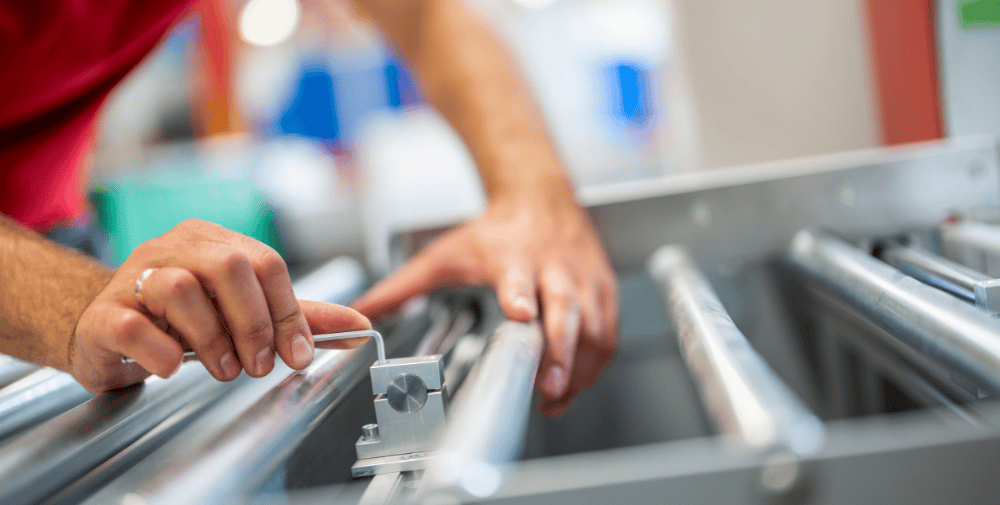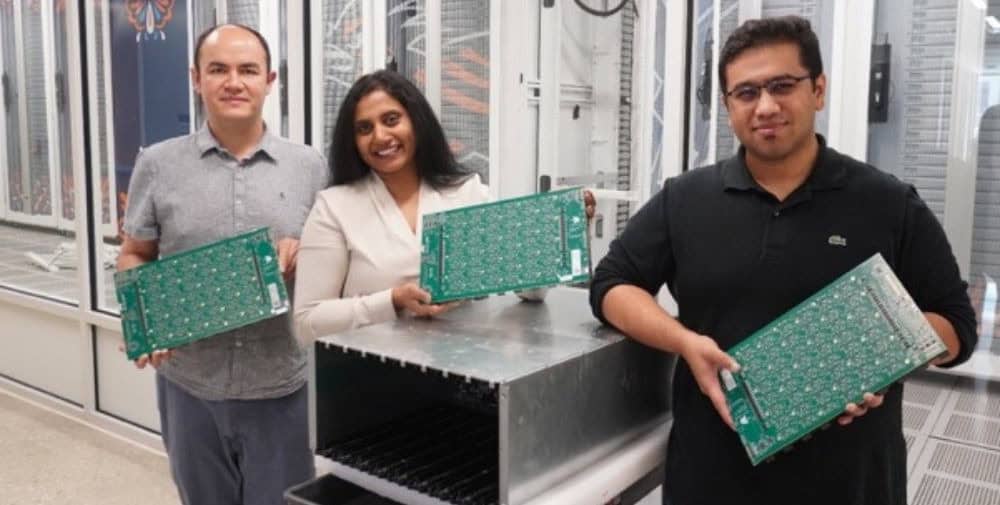
A team led by Patrick Springer from the Fraunhofer Institute for Manufacturing Engineering and Automation IPA recently put a new 3D printer into operation at the ARENA2036 research campus in Stuttgart. At first glance, the machine does not look very different from comparable models. Through two small windows, you can see how a laser beam solidifies plastic powder applied over a large area at precisely defined points. The process is repeated layer by layer until the desired component is finished. This 3D printing process is called laser sintering.
Three-fold modified 3D printing process
At second glance, it becomes clear how the new 3D printer in the ARENA2036 differs from others. Firstly, there is the fiber laser that melts the plastic powder: “It has a higher output and can be focused more strongly than the CO2 lasers currently in use,” explains Springer, who heads the Additive Processes for Thermoplastics research team at Fraunhofer IPA. “This enables the system to produce components with exact dimensions and in a short time.”
Then there is the plastic powder: “We use a polypropylene powder that is mixed with small glass particles and gives the finished plastic component more rigidity. It is a material that is not yet commercially available. We now have to gradually adapt the printing process to the new material and its properties so that it runs reliably and produces the desired geometries,” says Springer.
And finally, there is the sensor: “It should allow us to observe the printing process virtually live,” explains Springer. “It records the signals that are reflected when the laser beam hits the powder with the glass particles. From this, we can hopefully deduce whether the process is running correctly or whether errors are occurring. We are working closely with the sensor manufacturer and the University of Stuttgart.”
In just a few months to the finished component
The fiber laser, the polypropylene powder mixed with glass particles and the sensor – this test setup should help to shorten the product development process in the automotive industry and reduce its costs. So far, the industry has only produced sample components and prototypes using additive manufacturing, i.e. with 3D printers. Functional plastic components made of polypropylene for pre-series vehicles, on the other hand, are manufactured using injection molding, as there is currently no alternative to producing components in the desired quality.
However, expensive special tools have to be procured from suppliers for everything that is to be produced using injection molding. It can quickly take three to six months before the first components have been produced and tested. “With additive manufacturing, it could take just two to three weeks before the components are available,” says Springer. “The developers can use the time saved to either further optimize the component or bring it to market more quickly. And for series production, larger quantities can then be produced economically with one tool.”
With the new 3D printer in the ARENA2036, Mark Becker first produces simple test components and then ventures on to the next more complex component. Over time, he will find the optimal process parameters – and train the AI model at the same time.
Components from the 3D printer in injection molding quality
However, it will be more than a year before this is possible. Mark Becker, one of Springer’s colleagues, is currently feeling his way towards the optimum process parameters. He is starting with simple components, manufacturing them with increasing precision and quality until they have reached the required quality. He then ventures on to the next more complex component. For this, he uses the new industrial 3D printer in the ARENA2036, which has a comparatively large installation space and is equipped with two fiber lasers. “The machine can therefore also build large parts in a short time. The development of suitable process parameters for processing new plastics is particularly important for this,” says Becker.
In parallel, Becker is working with the project partners to test how the sensor can be used to monitor the laser process. An AI model is to be trained using the data that the sensor collects and the machine data that the 3D printer records as standard. The more plastic components Becker produces, the better the artificial intelligence understands what the optimal process parameters are and how deviations affect product quality.
Digitalized process chain for additively manufactured plastic components
This is all part of the “DigiAutoFab” research project, which was launched in late summer 2023 and will run until 30 June 2026. The aim is to create a fully digitalized process chain for additively manufactured plastic components – from design to production preparation and production itself, right through to downstream processes. The aim is not only to shorten the product creation process. In future, laser sintering will also be used to produce spare parts and variants of mass-produced vehicles in line with demand. However, the results from the project should not only benefit the automotive industry, but also be transferable to other sectors.
– – – – – –
Further links
👉 www.ipa.fraunhofer.de
Photo: Fraunhofer IPA/Rainer Bez




